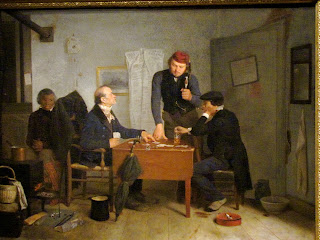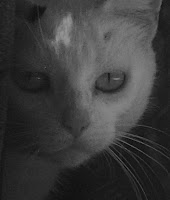



Although I fly if necessary, I’m never happy about it, and I’m the sole "decider" of what’s necessary.
Jetliners. What better illustrates the sardine factor?—the human transmogrified to insignificant fish crammed in tin? Or in the butcher shop's multitude of meat, the smallest kielbasa tube hanging among shiny knives and silver counters.
Kurt Vonnegut’s Slaughterhouse-Five (Dell 1968) offers many of the greatest lines in all of literature and philosophy. In the last chapter, his friend Bernard O’Hare comes across the prediction that the world’s population will double to seven billion by the year 2000. Vonnegut responds, “’I suppose they will all want dignity.’” Ditto the passengers on a 747.
Then there’s the bladder factor. My closest thing to a scary plane experience was the prospect of having to retrieve my old fullback skills and bowl over the linebacker-stewardess who stood between me and the john while some CEO’s airplane sat on the tarmac in Chicago. I think she knew I meant business about my business; she stepped aside.
I understand the safety statistics of flying compared to other modes of travel. I even understand an ounce of the principle of lift and all that physics jazz. But the whole business remains unnatural, and the larger the plane, the more unnatural it is to take off and stay aloft.
For some reason, I’ve become more aware of all that in recent years, and it results in a lot of childlike staring--the small planes at the little airport a mile away or the monsters blowing away my chimney as they approach Detroit Metro 25 miles southwest.
My getting the camera a few months ago was a mixed blessing, partly because it results in my trying to photograph planes. If you think today’s pics of hovering metal cigar cases look natural, if you see nothing odd or downright spooky about them, especially when juxtaposed to warm, earthbound trees, let me know, and we can try to find the right kind of doctor for you.
Till then, I insist that humans + flight = voodoo, and I don’t intend to discuss it.
My counter-voodoo, by the way, is scotch. A doctor friend once recommended it, and if it ain’t broke, don’t fix it.







































